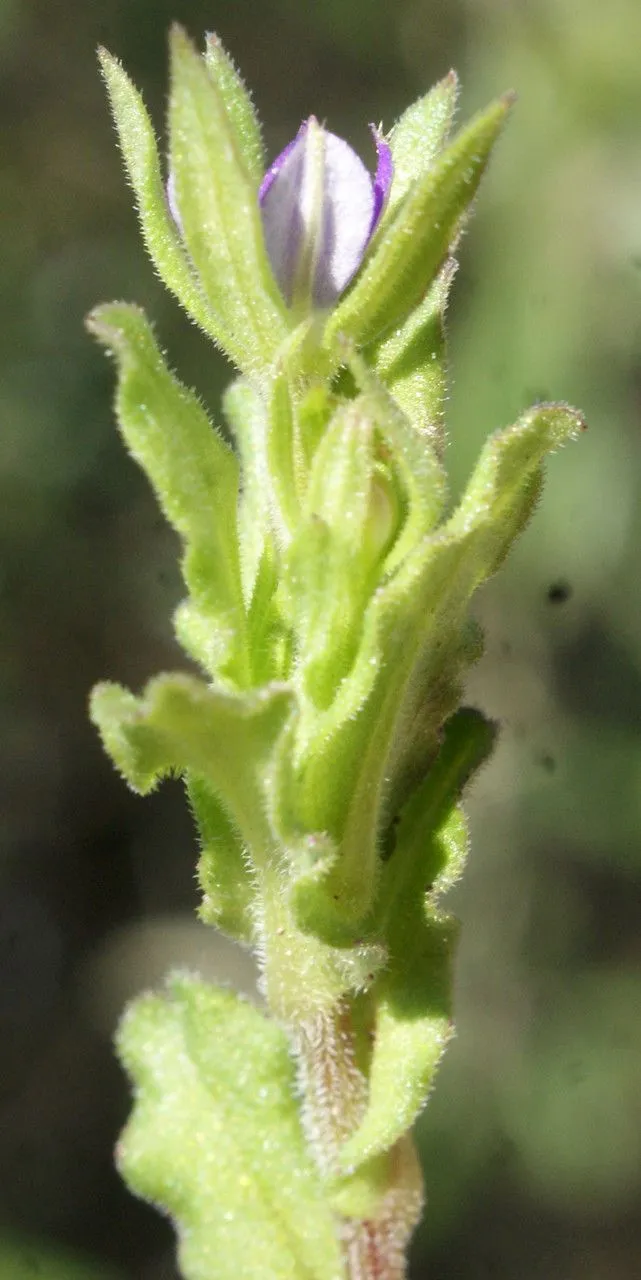
Author: (L.) Delarbre
Bibliography: Fl. Auvergne, ed. 2: 47 (1800)
Year: 1800
Status: accepted
Rank: species
Genus: Legousia
Vegetable: False
Observations: Macaronesia, Europe to Medit. and Iran
Venus’s looking-glass, scientifically known as Legousia hybrida, is a captivating plant species belonging to the Campanulaceae family. It was first documented in the second edition of “Flora Auvergne” in 1800 by the botanist L. Delarbre.
This enchanting plant is primarily found in regions ranging from Macaronesia and Europe to the Mediterranean and extending as far as Iran. The wide distribution of Venus’s looking-glass highlights its adaptability to a variety of climates and soils, making it a versatile inquiry for botanists and horticulturists alike.
Legousia hybrida is cherished for its delicate bell-shaped flowers, which typically exhibit a striking hue that ranges from purples to blues, resembling the enchanting appearance of a looking glass—hence its common name. These blossoms not only add visual delight to their habitats but also play a crucial role in attracting pollinators, thereby contributing to the ecosystem’s health and biodiversity.
The plant’s physique is relatively modest with slender stems that can branch out gracefully, ending in the vibrant blooms that can captivate any observer. The leaves of Venus’s looking-glass are simple yet elegant, often slightly toothed and arranged alternately along the stem.
Venus’s looking-glass has been of substantial interest not only for its ornamental appeal but also for its ecological significance. Its presence in diverse geographic locations underscores the plant’s robustness and the fascinating evolutionary traits it has developed to thrive across different environments.
Overall, Legousia hybrida, or Venus’s looking-glass, continues to be a subject of botanical admiration and study, with its beautiful flowers and wide-spanning presence offering immense aesthetic and ecological value.
Deu: kleinblütiger frauenspiegel, kleiner frauenspiegel, kleiner venusspiegel
Dan: liden venusspejl, ungarsk vikke
Swe: ungersk vicker, spretnäva, dvärgspegel, venusspegel
Eng: venus’s looking-glass, venus’s-looking-glass
Nld: klein spiegelklokje
Fra: miroir-de-vénus, petite spéculaire
Ces: zvoněnka různobarvá
Cym: drych gwener
En: Venus’s looking-glass, Venus’s-looking-glass
Cs: Zvoněnka různobarvá
Da: Liden venusspejl, Ungarsk vikke
Nl: Klein spiegelklokje
Fi: Muusanpeili
Fr: Miroir-de-Vénus, Petite spéculaire, Spéculaire hybride, Campanule bâtarde, Légousie hybride, Spéculaire miroir de Vénus, Miroir de Vénus hybride
De: Kleiner Frauenspiegel, Kleinblütiger Frauenspiegel, Kleiner Venusspiegel
He: סגולית הכלאיים
It: Specchio di Venere ondulato
Fa: آینه ونوس مزرعهای
Es: Espejo de oveja
Sv: Dvärgspegel, Ungersk vicker, Spretnäva, Venusspegel
Cy: Drych Gwener
Taken Mar 16, 2017 by Tela Botanica − Liliane ROUBAUDI (cc-by-sa)
Taken Mar 16, 2017 by Tela Botanica − Liliane ROUBAUDI (cc-by-sa)
Taken Mar 16, 2017 by Tela Botanica − Liliane ROUBAUDI (cc-by-sa)
Taken May 21, 2017 by Tela Botanica − Jean-Claude CALAIS (cc-by-sa)
Taken May 21, 2017 by Tela Botanica − Jean-Claude CALAIS (cc-by-sa)
Taken Apr 27, 2021 by Thomas Masclaux (cc-by-sa)
Taken Jun 17, 2019 by aurelie poulet (cc-by-sa)
Taken Jun 11, 2013 by Tela Botanica − Denis FILOSA (cc-by-sa)
Taken Mar 16, 2017 by Tela Botanica − Liliane ROUBAUDI (cc-by-sa)
Taken Mar 16, 2017 by Tela Botanica − Liliane ROUBAUDI (cc-by-sa)
Taken May 15, 2006 by Photoflora – Bernard TILLY (©)
Taken May 15, 2006 by Photoflora – Bernard TILLY (©)
Taken May 15, 2018 by Photoflora – Benoit BOCK (©)
Taken Jan 1, 1970 by Photoflora – L’Abbé COSTE (©)
Taken Jun 14, 2013 by Tela Botanica − Hugues TINGUY (cc-by-sa)
Taken May 23, 2015 by Tela Botanica − David MERCIER (cc-by-sa)
Taken Apr 11, 2015 by Tela Botanica − Mmv COURS BOTANIQUE (cc-by-sa)
Taken May 23, 2015 by Tela Botanica − David MERCIER (cc-by-sa)
Taken Jun 3, 2014 by Tela Botanica − Julien PIQUERAY (cc-by-sa)
Taken Mar 16, 2017 by Tela Botanica − Liliane ROUBAUDI (cc-by-sa)
Taken May 15, 2008 by Photoflora – Jean-Luc TASSET (©)
Taken May 15, 2005 by Photoflora – Jean-Luc TASSET (©)
Taken May 26, 2016 by Tela Botanica − Genevieve BOTTI (cc-by-sa)
© copyright of the Board of Trustees of the Royal Botanic Gardens, Kew.
© copyright of the Board of Trustees of the Royal Botanic Gardens, Kew.
© copyright of the Board of Trustees of the Royal Botanic Gardens, Kew.
Ph maximum: 8.0
Ph minimum: 7.5
Light: 8
Atmospheric humidity: 4
Soil nutriments: 5
Family: Myrtaceae Author: (F.Muell.) K.D.Hill & L.A.S.Johnson Bibliography: Telopea 6: 402 (1995) Year: 1995 Status:…
Family: Rubiaceae Author: Pierre ex A.Froehner Bibliography: Notizbl. Bot. Gart. Berlin-Dahlem 1: 237 (1897) Year:…
Family: Sapindaceae Author: Koidz. Bibliography: J. Coll. Sci. Imp. Univ. Tokyo 32(1): 38 (1911) Year:…
Family: Asteraceae Author: A.Gray Bibliography: Pacif. Railr. Rep.: 107 (1857) Year: 1857 Status: accepted Rank:…
Family: Fabaceae Author: Medik. Bibliography: Vorles. Churpfälz. Phys.-Ökon. Ges. 2: 398 (1787) Year: 1787 Status:…
Family: Aspleniaceae Author: (Cav.) Alston Bibliography: Bull. Misc. Inform. Kew 1932: 309 (1932) Year: 1932…